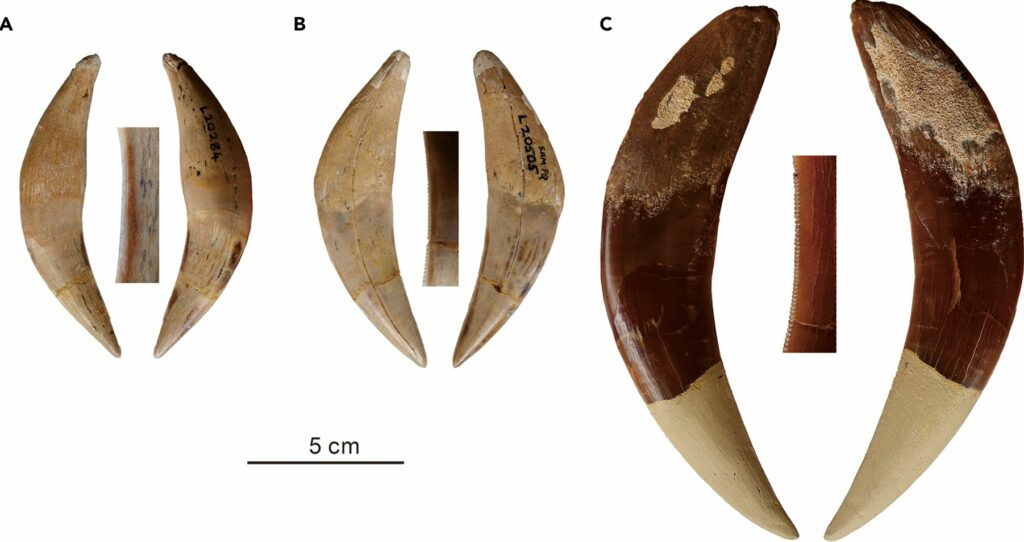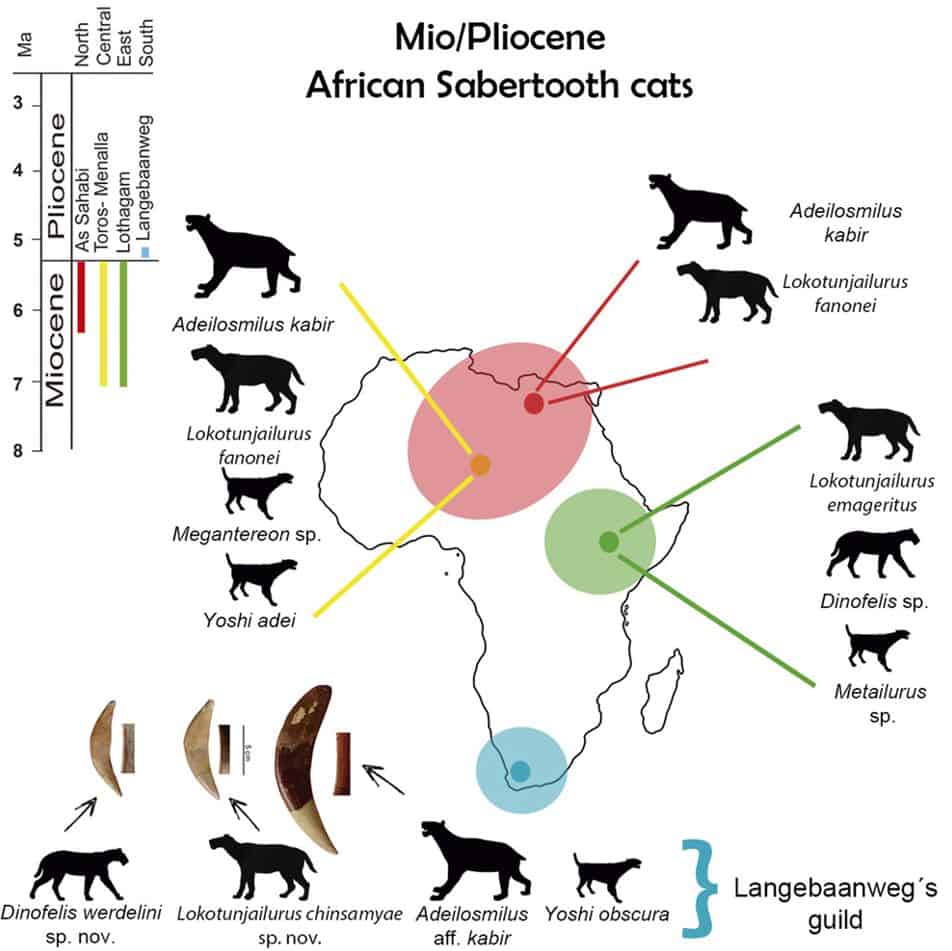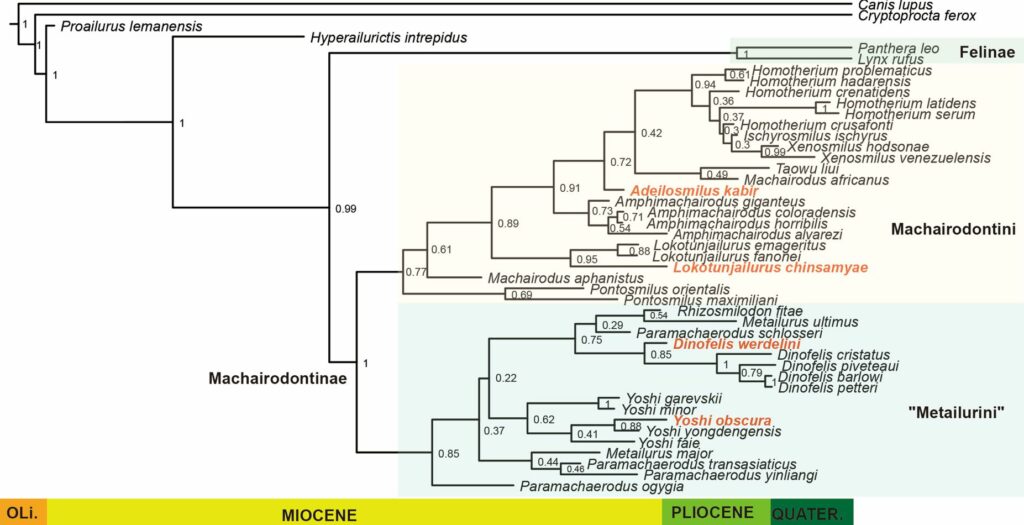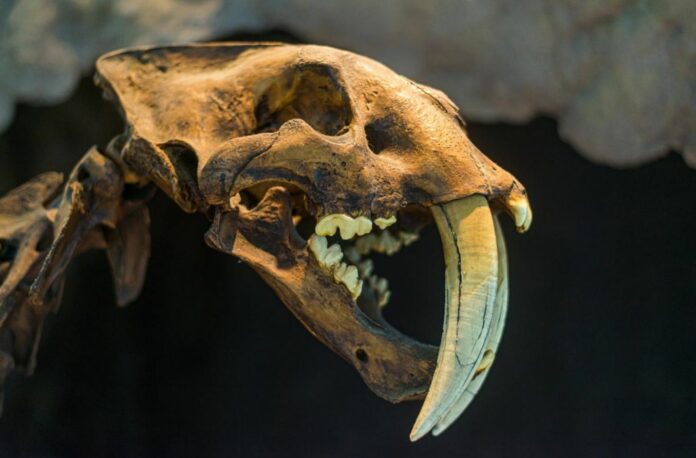Two New Species of Ancient Sabertooth Cat Discovered
Paleontologists just found two new species of sabertooth cat that roamed Africa around 6-7 million years ago, around the time when hominins—the group that includes modern humans—began to evolve.
Paleontologists have recently made an exciting discovery, identifying two previously unknown species of sabertooth cat that inhabited Africa approximately 6-7 million years ago. This period coincides with the evolutionary emergence of hominins, a group encompassing modern humans.
Sabertooth cats, a varied cluster of extended-toothed predators, once stalked the plains of Africa roughly 6-7 million years ago, coinciding with the evolutionary emergence of hominins— a group that comprises modern humans.
Researchers have recently unearthed two novel sabertooth species while examining an extensive global Pliocene fossil collection in Langebaanweg, situated north of Cape Town in South Africa. This study, published today in iScience, also unveils the first family tree of the region’s ancient sabertooth.
The discoveries propose a divergent distribution pattern for these prehistoric creatures in ancient Africa than what was previously believed, supplying crucial information about Africa’s paleoenvironment.
Alberto Valenciano (@paleo_alberto), the senior author and a paleontologist at Complutense University, noted that “the known material of sabertooths from Langebaanweg was relatively poor, and the importance of these sabertoothed cats has not been properly recognized.”

He added: “Our phylogenetic analysis is the first one to take Langebaanweg species into consideration.”
This research delineates four species in total, among which Dinofelis werdelini and Lokotunjailurus chimsamyae are newly identified. Dinofelis sabertooths are spread globally with fossils unearthed in Africa, China, Europe, and North America.
The team anticipated finding a new Dinofelis species from Langebaanweg based on earlier investigations. However, Lokotunjailurus has previously been traced only in Kenya and Chad, implying a potential widespread distribution across Africa between 5–7 million years ago.
Valenciano, a former postdoctoral fellow at the Iziko Museums of South Africa, collaborated with a team from China, South Africa, and Spain to assemble the final project. They built a family tree by cataloguing the physical attributes of each sabertooth species—such as dental, cranial, and jaw characteristics—and converting this data into a matrix that could establish the evolutionary relationships among them.
The analysis of Langebaanweg sabertooths (Machairodontini, Metailurini, and Feline) correlates with the escalating global temperatures and ecological transformations during the Pliocene epoch. For example, the existence of larger, swift-running Machairodontini cats points towards an open grassland environment in Langebaanweg.

Conversely, the presence of Metailurini cats indicates that forested environments were also prevalent. The discovery of both Metailurine and Machairodonti species indicates a blend of forest and grassland habitats in Langebaanweg around 5.2 million years ago, but a higher proportion of Machairodonti species reaffirms southern Africa’s shift towards expansive grasslands during that era.
The authors propose that the gradual aridification through the Mio-Pliocene period, leading to open environments, could have significantly influenced the evolution of hominid bipedalism. They posit that the composition of Langebaanweg’s sabertooth guild and its environmental and paleobiogeographic implications offer a contextual basis for future exploration of hominid origins and evolution.
Interestingly, the sabertooth composition at Langebaanweg bears a striking resemblance to that of Yuanmou, China. There may even be a close evolutionary link between the Longchuansmilus sabertooths of Yuanmou and Africa’s Lokotunjailurus species.

“This suggests that the ancient environment of the two regions was similar or that there was a potential migration route between the Langebaanweg and Yuanmou,” added first author Qigao Jiangzuo, a paleontologist at Peking University.
Further fossil discoveries could assist in determining the precise relationship between these two sites.
“The two new sabertooths are only an example of the numerous unpublished fossils from Langebaanweg housed at Iziko in the Cenozoic Collections,” commented Romala Govender, a curator, and paleontologist at the Iziko Museums in South Africa. “This brings to the fore the need for new and detailed studies of Langebaanweg fauna.”
Image Credit: Shutterstock and Shutterstock
